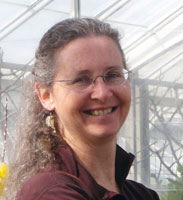August 8, 2017
List of Blogs
|<
<
>
>|
Tags
Milkweed
Butterflies and Moths
|
|
Rare Plants: Do's and Don't's
|
|
This month, several Toadshade employees took some time off for vacation, and it brought to mind
an issue that growers of native plants often face. Naturally, being the plant nerds we are,
when we arrived at our destination, we all took to the woods armed with cameras and field guides.
We saw plants we'd never seen before, rare orchids growing in a bog, and plants we've never
gotten the chance to propagate. We slapped a lot of mosquitoes, saw some really neat wildlife,
and we were very excited to identify so many new and interesting species of plants! But of course,
we left them all undisturbed where we found them: we would never harm wild plant colonies.
|
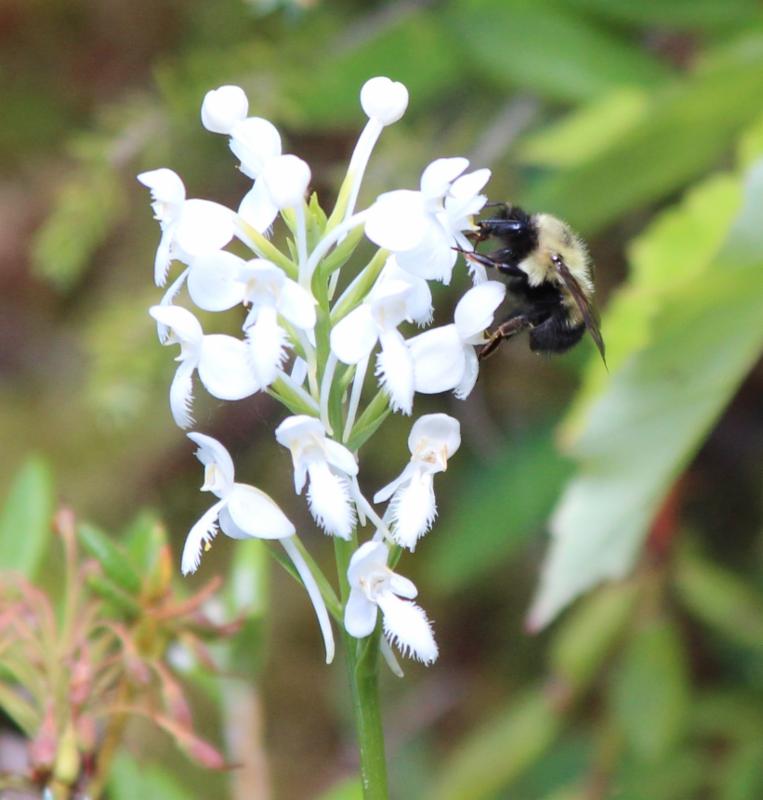
We saw this plant on vacation! White Fringed Orchids
(Platanthera blephariglottis) require specific (rather delicate) habitats, and bumble bees
(Bombus sp.) and other pollinators depend on them!
|
|
What does it mean that all of Toadshade's plants are propagated on-site?
Toadshade maintains a strict policy regarding our seeds and plants. All of the plants we sell
were grown here, from seed or plant specimens that were ethically acquired. We know where
each of our plants' original genetic stock came from, and we know that seed collection was
all done with respect to the health of the surrounding environment. Almost all of our seeds are
collected on-site, or from our seed propagation fields in upstate New York. We never compromise
our policy on ethical seed collection and plant production: Toadshade never,
EVER digs plants to sell from the wild.
|
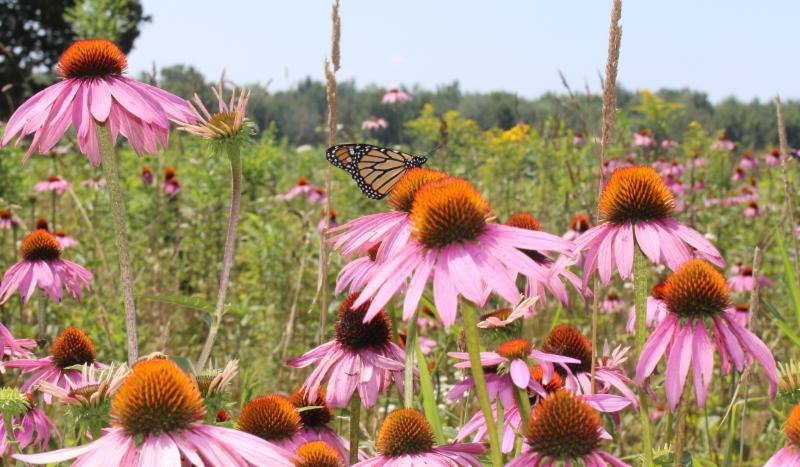
If you look carefully, you can see the Monarch Butterfly
(Danaus plexippus) nectaring on one of these Purple Coneflowers (Echinacea purpurea)
growing in one of our seed propagation fields in upstate New York.
|
|
Why is this important?
Recently someone we know found a patch of Purple Milkweed (Asclepias purpurescans) growing in the wild.
When they posted the picture of the plants to facebook, all of their naturalist friends wanted to get seeds
from those plants; after all, Purple Milkweeds are rare and beautiful, and they're very difficult to find!
However, as someone pointed out before any action was taken, removing any significant quantity of seed from
a single patch of a rare plant harms that plant's ability to propagate itself in its own environment
(and is illegal in many cases!). If this rare plant has found a sustainable foothold and is growing;
clearly its seeds could also sprout here! When seeds are removed in numbers sufficient to gift to all of
your native-plant-loving friends however, the plant will likely never spread its seeds beyond that little patch,
and the sustainability of its foothold in its own habitat decreases sharply; in a few years, it could be gone
because it wasn't able to propagate beyond the one patch. In the case of Purple Milkweed, this species
struggles to set seed reliably, so if it's growing wild, that means it has established pollinators in the
area as well as sufficient genetic diversity to create viable seeds. You likely won't ever know all the
specifics of why a plant is succeeding in one particular spot. The best you can do is trust that the
interrelations of the environmental factors in that spot are somehow working in the plant's favor, and
try not to mess it up! The idea with rare plants is to grow more of them so that they can spread and
re-establish themselves in their native environments-- not to harm already-established wild colonies.
This is the same reason that digging plants from the wild is such a problem; if a plant is growing wild, let it grow!!
In many places, native plants are threatened by an overabundance of deer, a multitude of invasive plant
species crowding them out of their native habitats, and untold other degradations of their habitat including
development. Native Plant enthusiasts and gardeners shouldn't be on the list of threats, and yet far, far too
often you hear of gardeners who are doing more harm than good by unnecessarily 'rescuing' wild plants from their
native habitat, only to plant them in their garden into a controlled little clump that is not permitted to spread!
This is bad stewardship! Think "Finding Nemo"; don't kidnap stuff from the wild, you won't be doing it a favor.
|
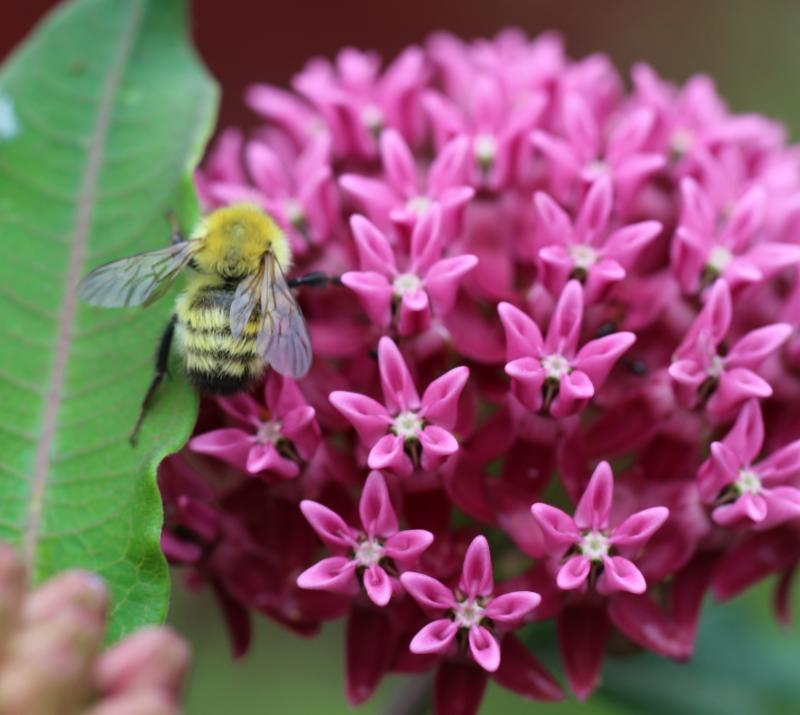
The rare Purple Milkweed (Asclepias purpurescans) has astonishingly
vivid flowers. Toadshade offers these for sale every spring, but there's always a waiting list for these
plants, so it's good to reserve them early.
|
|
So what should I do instead?
If you find rare plants growing wild in a park near you, it's best to leave them alone!
They're doing fine without you, so unless
Japanese Knotweed (Fallopia japonica)
or some other similarly aggressive invasive is bearing down upon them (in which case call
your local invasive species strike team or a similar group), or a freeway is about to be built
directly on top of the colony (in which case call your local native plant group), they should do
just fine without human interference. That is, after all, what they evolved to do. And if
you find that you want that species in your garden, great: order it from a reputable source
so that you can enhance the local population instead of harming it!
|
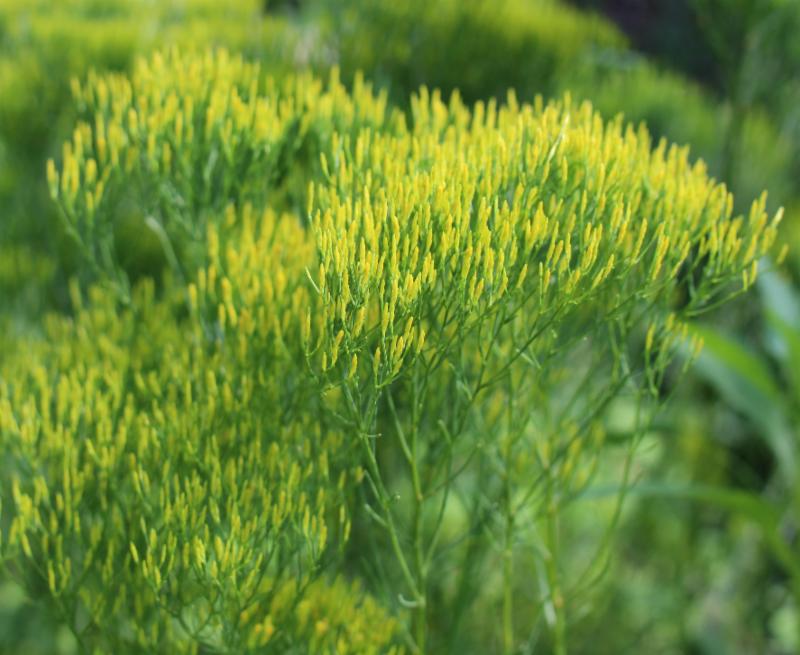
Nuttall's Rayless Goldenrod (Bigelowia nuttallii)
is a tiny and tidy little plant, and unusual enough that it often gets people asking questions.
It's also one of many rare plants Toadshade offers!
|
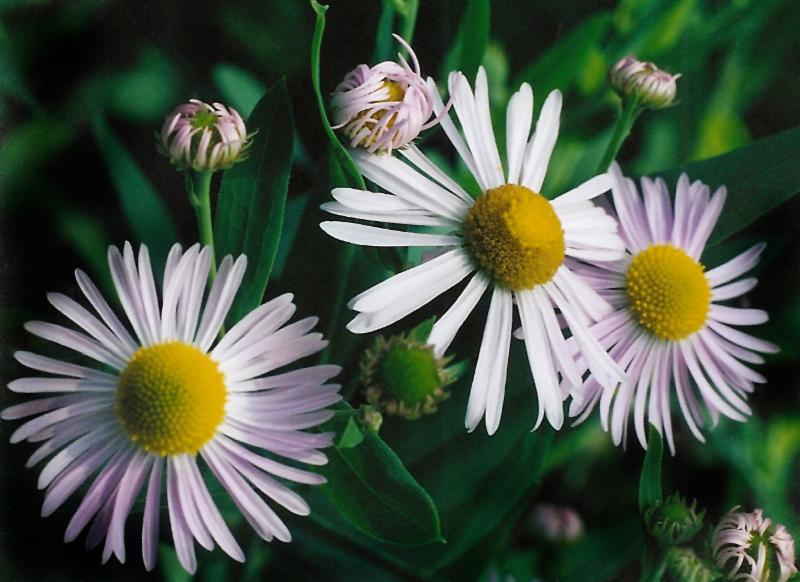
Plants which are federally threatened or endangered are
protected by federal law; for example although Toadshade offers beautiful Winged False Asters
(Boltonia decurrens) for sale, we can't ship them out of New Jersey, although we do offer
seeds (which we collect from our own seed stock).
|
|
How does this apply to my native plantings?
Obviously we encourage the planting of unusual native plants in your garden (there are so many good
reasons to do so!)-- just make sure you buy them from a company with ethically sourced plants and seeds,
that propagates plants rather than digging them from the wild. Remember, one of the very important
reasons for planting native plants is to make them less rare in their own habitats. If they're not
ethically propagated, or if they're dug from the wild, you could end up doing the opposite! And if
you find a wild plant that's endangered, get in contact with an official local native plant group
or your state Department of Environmental Protection so you can make sure that they know the plant
is there and is properly protected! In the words of the Minnesota Wildflower Society,
"Wildflowers should never be stolen from a wild place and brought home. If one does that they are
a poor excuse for a gardener." Perhaps that's most easily avoided by following the advice of another
more famous and gentle quote: "take nothing but pictures, leave nothing but footprints." In other words,
please garden responsibly! Wildflowers are for everyone to enjoy, and an important part of the ecosystem
wherever they're found! Don't make the mistake of thinking a wildflower is going to waste because
it's not in your garden!
|
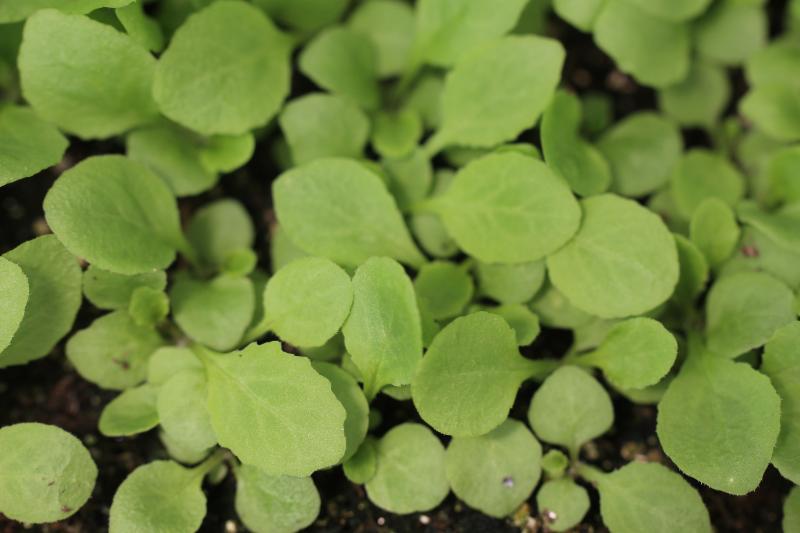
Great Blue Lobelia (Lobelia siphilitica)
seedlings in the Toadshade greenhouse.
|
|
|

